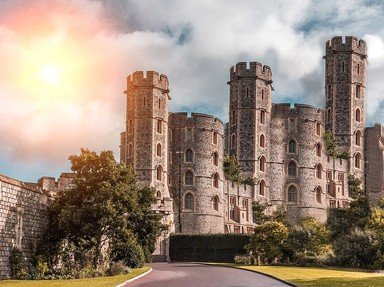Quiz Answer Key and Fun Facts
1. Evoking memories of British castles, in which south Indian capital city would you find the palace in the photo?
2. Moving south, we arrive at Mysore, a city once nicknamed the 'Land of Palaces'. Which of these is an alternate name for the Palace of Mysore, the official residence of the Wodeyars, the erstwhile royal family of Mysore?
3. Tucked away in a quiet area in the city of Pune is a historical monument called the Aga Khan Palace. Which important figure of the Indian independence movement was once held here as a prisoner?
4. On the other side of Pune, we find another former royal residence built in a completely different style. Which of these dynasties built the Shaniwarwada fort-palace?
5. Known for its stunning sunset views from its lofty position on a hillock overlooking Lake Fateh Sagar, how is the Sajjangarh Palace of Udaipur better known?
6. Originally built as a summer palace by Maharana Jagat Singh II of the Mewar dynasty, what function does the Lake Palace in Udaipur serve now?
7. The Amer Palace, located eleven kilometres away from the city of Jaipur, houses a number of important structures within its complex. One of these, the Sheesh Mahal, contains interior decoration consisting mainly of a mosaic of mirrors and glass pieces.
8. In which troubled Indian state would you find the Amar Mahal Palace, the last official residence of the Dogra dynasty?
9. The Red Fort located in Delhi served as the palace-fort residence for the Mughal dynasty for almost two centuries till the Mughals were ousted by the British after the failed Indian rebellion of 1857. Which Mughal Emperor ordered its construction when he moved the capital of the empire from Agra to Delhi?
10. In what curious shape is the Falaknuma Palace of Hyderabad designed?
Source: Author
zorba_scank
This quiz was reviewed by FunTrivia editor
trident before going online.
Any errors found in FunTrivia content are routinely corrected through our feedback system.


